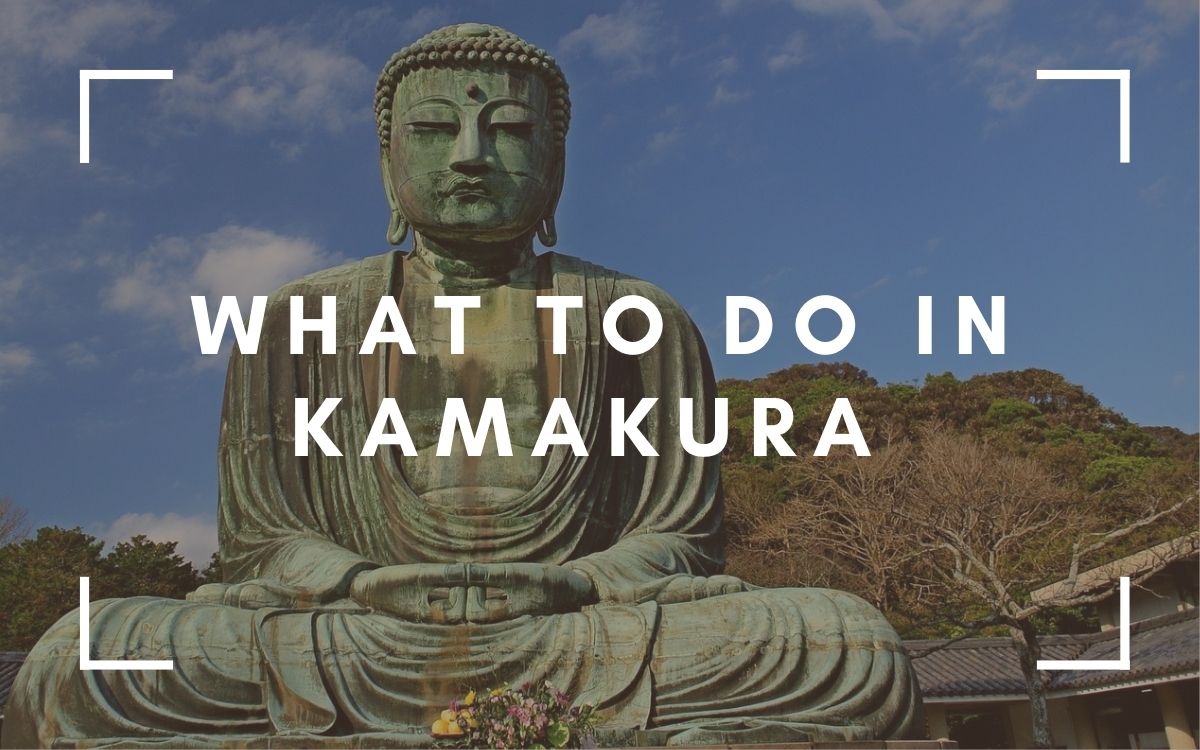If you have spent some time in Tokyo, searched out all the off the beaten path destinations within the city, and like me, you crave some fresh air, some nature, and a little bit of relaxation, then it’s time to on a one day trip to Kamakura may be just what you need.
I have put together my one-day itinerary with 10 great ideas to help you know what to do in Kamakura and enjoy an unforgettable day trip.
You may also enjoy
- How to get from Tokyo airport to the city centre
- 5 day Tokyo itinerary
- Day trip from Tokyo – What to do in Kawaguchiko
Coming your way in this post - click to expand ->
Note – Please know, some of the external links on this page are affiliate links, this means that if you purchase after following one, I make a small commission from the sale at no additional cost to yourself.
The Kamakura Period: A snippet of history
While the name Kamakura appears in texts as early as 712 the city of Kamakura first became important in 1192 when Minamoto no Yoritomo, a prominent figure in Japanese history, founded the Kamakura Shogunate and with this the Kamakura Period started.
As de facto ruler over most of Japan and Kamakura becoming de facto the capital of Japan for over 140 years, it is a significant city from a historical standpoint.
The rule of Kamakura ended in 1333 when the city was sacked by Emperor loyalists and a chaotic period followed, in which Kamakura stayed significant as the capital of Kanto region and even dominated the area economically.
Unfortunately, it didn’t end well for Kamakura. It was almost burned down in 1526, and when in 1603 the Tokugawa Shogun decided to move the capital of Japan to nearby Edo (now Tokyo), Kamakura was never able to recover its former glory and power.
Kamakura gradually returned to being a small fishing village similar to what it had been before the beginning of the Kamakura Period in Japan in 1192.
Because of its cultural assets, beaches and mystique surrounding the small city of Kamakura, it became a popular spot for the wealthy to relax during the 19th and 20th century and has remained a popular tourist destination ever since.
If you want to learn more about the history of Japan consider reading A Brief History of Japan before your trip.

What to do in Kamakura
- Rent a Yukata or Kimono
- Ride the Enoshima Electric Railway to Hase Station
- Visit the Great Buddha of Kamakura
- Savor the view at the top of Hasedera Temple
- Go shopping at Komachi Dori
- Make a wish at Tsurugaoka Hachimangu Shrine
- Stroll through the Bamboo Grove of Hokokuji
- Admire the Moss Stairs of Sugimoto Dera
- Relax or take a wander along Yuigahama Beach
- Try some delicious local treats
My perfect Kamakura day trip itinerary
In this Kakamura day trip itinerary, there is a lot of culture and history involved, mainly in the form of many temple and shrine visits. But there are also other highlights like the beach and delicious food to be found in Kamakura. From a cultural standpoint, in my opinion, Kamakura is the perfect spot for a 1 day trip from Tokyo.
I usually get up around 8 or 9 a.m. and make my way to Kamakura. You will reach Kamakura comfortably in about an hour by train. If you want to know how to get to Kamakura from Tokyo, please find the information at the bottom of this post.
I also recommend having Google Maps available, I know it can be hard to get around a foreign country without WIFI, but if you don’t have an international data plan for your phone, you can reserve a sweet little pocket WIFI or a sim card comfortably from home and pick it up at the airport when you arrive in Japan.
1. Rent a Yukata or Kimono

There is nothing nicer than exploring beautiful Kamakura dressed in a Japanese summer Kimono, called a Yukata. You can rent a Yukata or a Kimono close to Kamakura Station for the day. There are shops where you just walk in but if you want to be save you can also make a reservation at Kyoto Kimono Rental Wargo.
2. Ride the Enoshima Electric Railway to Hase Station
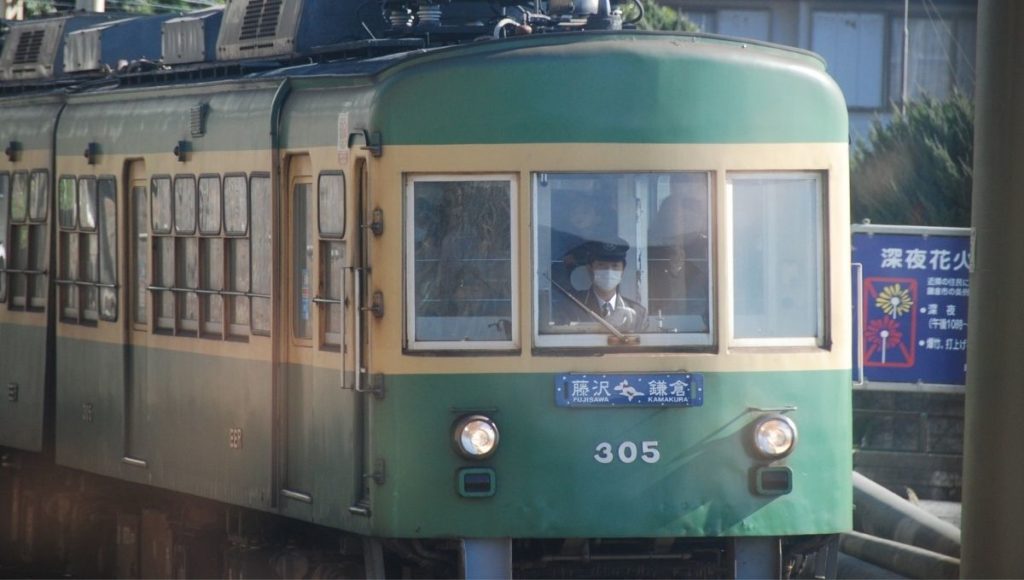
Your first and second stops should be the famous Great Buddha of Kamakura and Hase Dera Temple. They are within walking distance of each other, and you can most conveniently reach both by taking the Enoshima Dentetsu (Enoden) train line from Kamakura Station to Hase Station.
From the Station walk along the main street with many small interesting shops and restaurants and try not to buy too much.
3. Visit the Great Buddha of Kamakura

At the end of the main street, you will find the Kamakura Great Buddha which is part of the Kotokuin Temple. The entrance fee is 200 Yen, and for an additional 20 Yen, you can even visit the inside of the enormous bronze statue.
At the inside, you can learn about how the statue was constructed about 800 years ago (around 1252). Initially, there was a wooden statue housed in a great hall, but funds were raised to build a bronze statue and a new building after the old were damaged. For the first 250 years or so the great bronze Buddha stood covered in a hall, but due to repeated damage since around 1498, the Kamakura Daibutsu (as it is called in Japanese) stands in the open air.
The inside of the Kamakura Buddha is a confined space so don’t go if you are claustrophobic. And in summer it can get uncomfortably hot, and you will be drenched in sweat after your short visit inside. This just as a warning.
Visiting information
Name: Great Buddha (大仏) of Kotoku-in (高徳院)
Admission: 200 Yen (2 USD) + 20 Yen (0.20 USD) for a visit to the interior of the Buddha statue
Opening hours: 8 a.m. – 5 p.m.
Address: 4 Chome-2-28 Hase, Kamakura-shi, Kanagawa-ken 248-0016
4. Savor the view at the top of Hasedera Temple
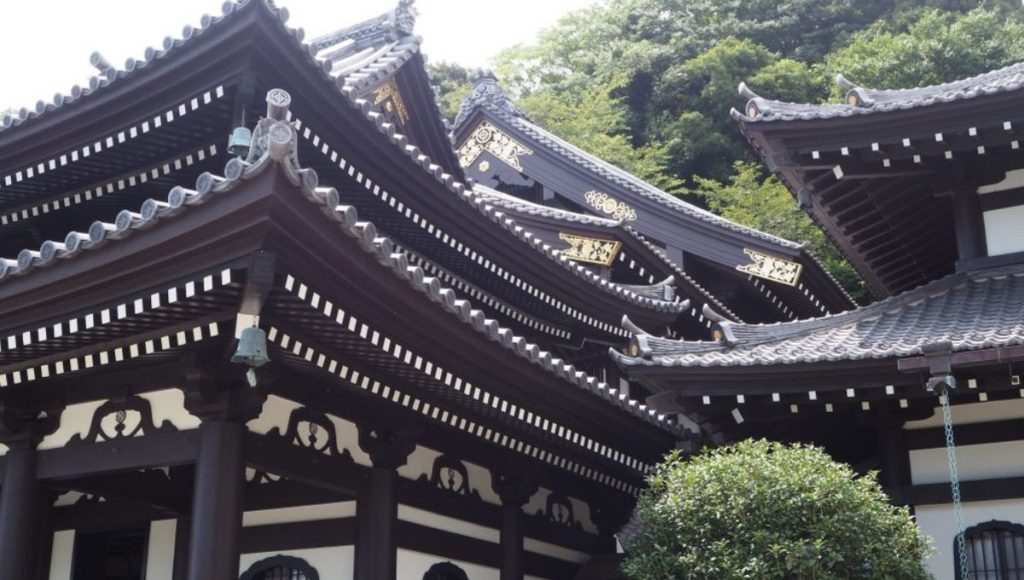
The second highlight in the Hase Area is Hase Dera also called Hase Kannon. Legend has it that the temple was first constructed in the Tempyo era between 729 and 749, but according to records found in the temple, it first gained importance during the Kamakura Period.
Because the Hasedera temple sits on the slope of Mount Kamakura, there are a lot of stairs involved if you want to explore the whole temple complex. Around the entrance at the bottom, there are some beautiful ponds with koi swimming in them housed in a typical Japanese style garden.
The stairs lead to different little altars on the way to the great Kannon hall where a big wooden Kannon statue is housed. If you climb even higher, you will get a beautiful view of Kamakura beach and the city of Kamakura.
The Hasedera temple is especially popular in June to July when the Hydrangea are in full blossom. It can get really crowded during that time. But in my opinion, the temple is worth a visit any time of the year.
Visiting information
Name: Hase Dera Temple (長谷寺)
Admission: 300 Yen (3 USD)
Opening hours: 8 a.m. – 5 p.m.
Address: 3 Chome-11-2 Hase, Kamakura-shi, Kanagawa-ken 248-0016
5. Go shopping at Komachi Dori

The always crowded shopping street in Kamakura is Komachi Dori. Here you can not only rent a Yukata for the day but also buy amazing souvenirs and eat delicious food.
Many shops selling sweets or other snacks also offer food samples and I love to go from one to the next and try everything.
6. Make a wish at Tsurugaoka Hachimangu Shrine

The Tsurugaoka Hachimangu with its big red torii is the most important Kamakura shrine. The city of Kamakura grew around Tsurugaoka Hachimangu Shrine and its 1.8-kilometer long approach. Established in 1063, it was a shrine which house the Hachiman kami a god for warriors. With the establishment of the Kamakura Shogunate Minamoto no Yoritomo, the founder moved the shrine to its current location and called on the Hachiman kami to protect his rule in Kamakura.
People who know about religious history in Japan won’t find it strange to learn that for almost 700 years the shrine was also an essential Buddhist temple, until the 1868 Shinto and Buddhism separation order.
This is the reason why even today many architectural parts of the shrine are Buddhist in origin. Unfortunately, because of this order, many of the Buddhist building and other cultural assets had to be destroyed and so the integrity of Tsurugaoka Hachimangu Shrine, and many other famous temples and shrines suffered because of the separation of Buddhism and Shintoism.
Visiting information
Name: Tsurugaoka Hachimangu (鶴岡八幡宮)
Admission: Free
Opening hours: Always open
Address: 2 Chome-1-31 Yukinoshita, Kamakura-shi, Kanagawa-ken 248-8588
7. Stroll through the Bamboo Grove of Hokokuji
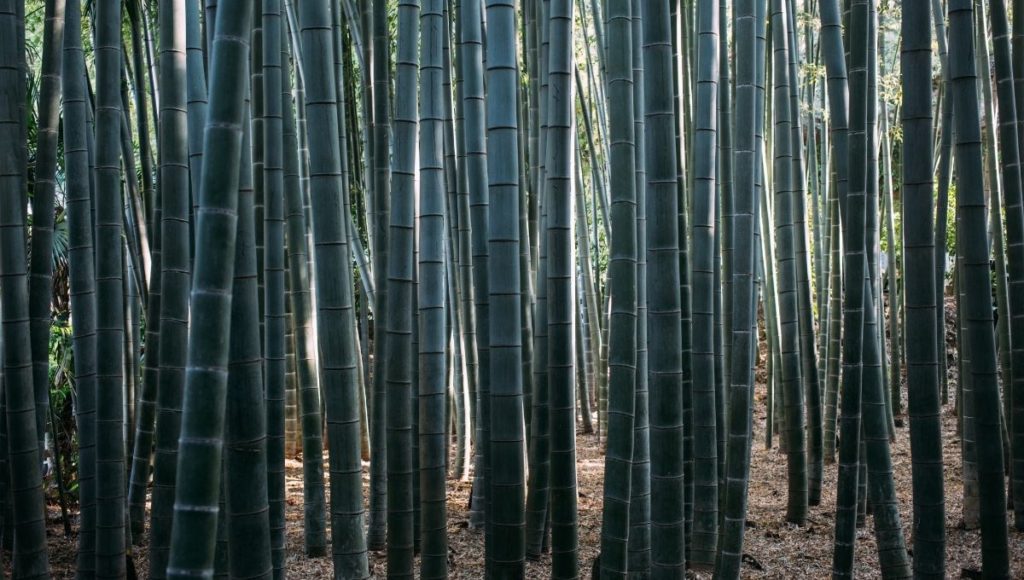
The Kamakura bamboo forest of Hokokuji Temple (also known as the bamboo temple) in the east of Kamakura is another point of interest and a charming place to spend a bit of time, relax and maybe even drink some tea while enjoying the cool and quiet.
It is a much smaller bamboo grove than the one in Kyoto’s Arashiyama district, but in my opinion, because of its size it is much more intimate and a better place to experience a bamboo grove. A small path, just wide enough for two people to pass, winds through the bamboo stalks. There are also some caves to explore and a little tea house, where you can sit down, sip some bitter matcha tea and enjoy the quiet of the atmosphere so different from the hectic in Tokyo.
Visiting information
Name: Hokokuji Temple (報国寺)
Admission: 200 Yen (2 USD) + 500 Yen (5 USD) for Tea
Opening hours: 9 a.m. – 4 p.m.
Address: 2 Chome-7-4 Jōmyōji, Kamakura-shi, Kanagawa-ken 248-0003
8. Admire the Moss Stairs of Sugimoto Dera
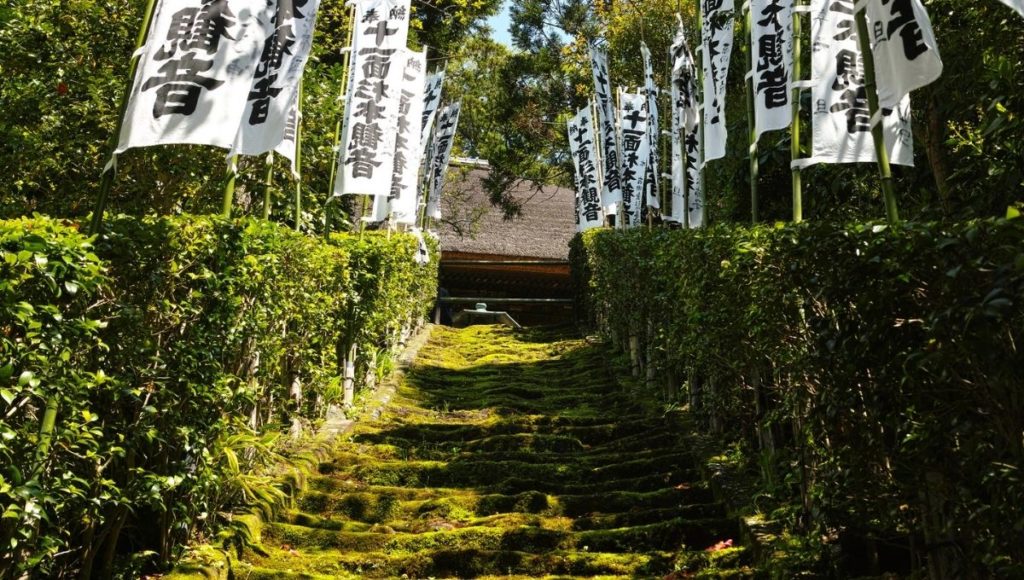
Not too far from Hokokuji Temple is Sugimoto Dera, another temple with an ancient history. It was founded in 734 which makes it the oldest temple in Kamakura. According to a legend the temple is nicknamed the Geba Kannon (Dismount Kannon) because non-believers would fall from their horses when they passed by.
I really like the temple because of the stone steps that are overgrown with moss leading from the bottom to the top where the Kannon is housed. It is too dangerous to use these steps anymore, and there are now new paths to the sides that will lead up.
Visiting information
Name: Sugimotodera (坂東三十三観音第一番札所 杉本寺)
Admission: 200 Yen (2 USD)
Opening hours: 8:00 a.m. – 4:30 p.m.
Address: 903 Nikaidō, Kamakura-shi, Kanagawa-ken 248-0002
9. Relax or take a wander along Yuigahama Beach

If you feel tired after learning so much about Japan’s history, culture and religion it is time to relax. And there is no better place to do that than Yuigahama beach. You can rent some chairs and a parasol and lie down on the beach. While you watch the Japanese youth having fun, playing in the sand and taking a swim in the ocean, you can eat some Japanese shaved ice bought at one of the stalls.
Kamakura beach is not only beautiful in summer but a stroll along the nearly empty beach in spring is also a lot of fun, and you can find a variety of ocean inhabitants. I saw some starfish, little crabs, a little ray and even an octopus who lived in an old can of coca cola.
10. Try some delicious local treats
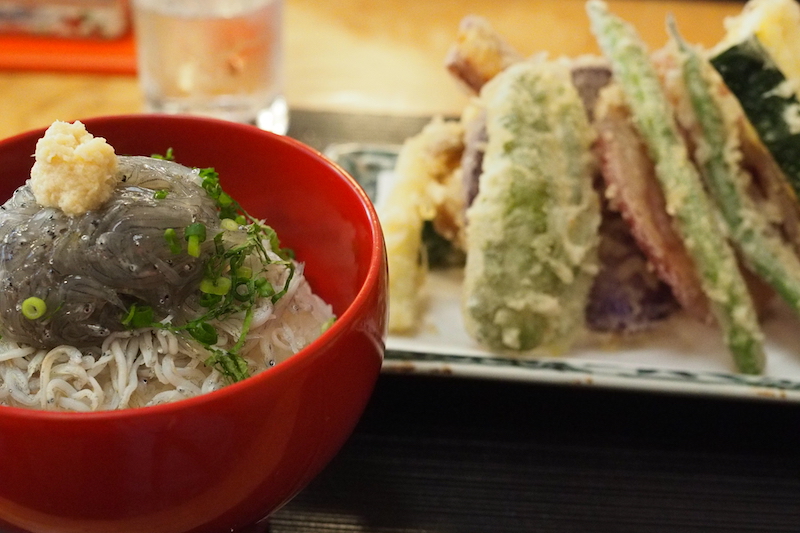
Eat Shirasudon at Akimoto
In every region of Japan, there is usually some typical food to try, and Japanese people love to seek out this food when they are traveling. I am much the same and always try to find out what the typical food of the region is before I visit.
In Kamakura it is Shirasu. Tiny little see-through fish that turn white when they are boiled. In Kamakura Shirasu is usually prepared as a Donburi (a rice bowl dish), the fishes are topped on rice either raw or cooked or deep fried. Seasoned with a little bit of wasabi and soy sauce and served with miso soup. If you are into Sushi, you will love Shirasudon.
While you can literally find Shirasudon at every corner in Kamakura, I recommend you seek out a restaurant called Akimoto. It serves either Shirasudon or a set of Shirasudon and Tempura made from local vegetables. The price at around 3000 Yen (30 USD) for lunch is quite steep but I was literally moaning and drooling all the time while eating because it was so delicious.
Visiting information
Name: Akimoto (秋本)
Opening hours: 11:00 a.m. – 3:30 p.m. and 5:00 p.m. – 8:00 p.m. Closed Wednesday
Address: 248-0006 Kanagawa-ken, Kamakura-shi, Komachi, 1 Chome−6−15 i-ZA Kamakura
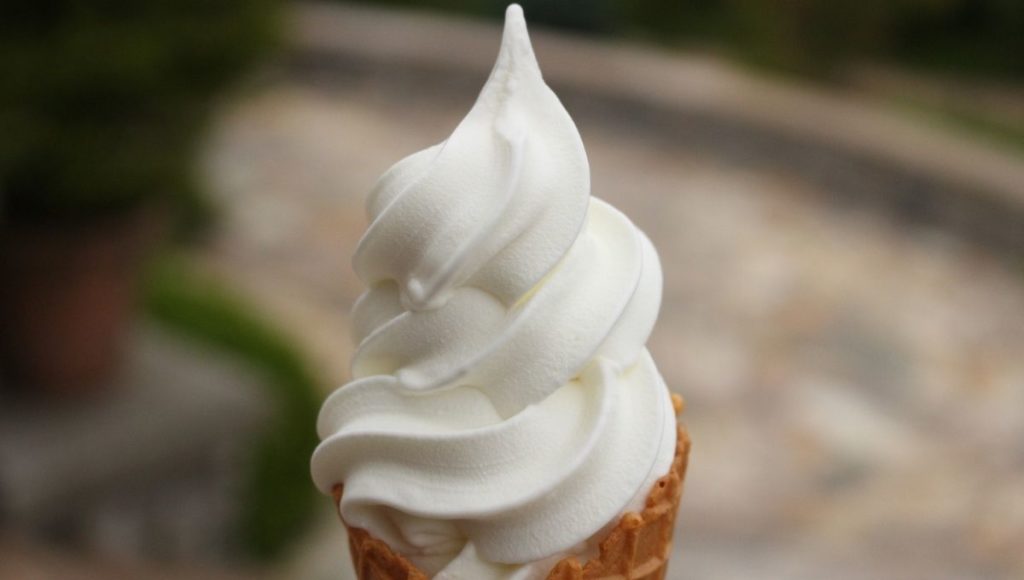
Try purple sweet potato soft serve ice cream at Imoyoashi
If you feel like a refreshment (and even if you don’t feel like one) I strongly recommend you stop at Imoyoashi for sweet potato soft serve ice cream.
You might think it sounds weird, but trust me, it’s so delicious. I love trying Japanese soft serve ice cream everywhere I go in Japan, but I think my favorite so far might actually be the sweet potato ice cream from Kamakura. So don’t miss a fantastic food experience!
The shop is located on the way between Hase Station and the Great Buddha. If you keep your eyes open, you won’t miss it!
Visiting information
Name: Imoyoashi Kamakura Daibutsuten (いも吉館鎌倉大仏店)
Opening hours: 10 a.m. – 5 p.m.
Address: 1 Chome-16-28 Hase, Kamakura, Kanagawa Prefecture 248-0016

Give flavored peanuts a go at Mameya
Another recommendation on the way between Hase Station and the Great Buddha is Mameya where they sell peanuts with a coating in over 70 flavors. You can try every single flavor they have for free, and it is a lot of fun finding your favorite.
There are peanuts in sweet flavors like soda or pineapple but also salty and spicy flavors like chili or curry. I liked the green curry best, and so I bought a pack to take home. Taka and I actually fought about who got to eat more, that’s how delicious the peanuts from Mameya are.
Visiting information
Name: Kamakura Mameya (鎌倉まめや)
Opening hours: 10 a.m. – 6 p.m.
Address: 2 Chome-14-16 Hase, Kamakura, Kanagawa Prefecture 248-0016
Bonus idea: Visit Enoshima Island

Off the coast of Kamakura, lies an island called Enoshima. You can get from Kamakura to Enoshima Island conveniently by crossing a bridge, either on foot and also by car.
There are so many things to experience (gardens, observation decks, caves and temples and shrines and of course restaurants and cafes with delicious food) on Enoshima that it is a whole day trip in and of itself.
While I love visiting Enoshima, I couldn’t include it in this post. But I thought you should know about it and maybe do a little research yourself if you are interested in exploring even more of Japan and the different day trips from Tokyo.
How to get to Kamakura from Tokyo

Now that you have all the necessary Kamakura day trip itinerary information it is also essential to know how to get from Tokyo to Kamakura by train.
Different trains connect Tokyo and Kamakura directly from different stations. I always take the JR Yokosuka Line from Shimbashi Station (it also stops at Tokyo Station). This will take 50 minutes and cost about 800 Yen (8 USD) one way.
From Shinjuku to Kamakura, for example, you can take the Shonan-Shinjuku Line, which also stops in Ikebukuro. This will also take roughly an hour and cost 920 yen (9 USD).
As you can see, depending on where you are in Tokyo different trains leave for Kamakura Station. But they are all JR trains and therefore free to use if you have a Japan Rail Pass, the cheapest way to get around Japan.
If you are planning on visiting other parts of Japan as well (like Kyoto or Hiroshima) I recommend you buy a Japan Rail Pass. It can only be purchased before you arrive in Japan.
One day tours from Tokyo to Kamakura
There are a couple of tour companies that offer guided tours to Kamakura. If you are interested in having a guide and a simple way to get to Kamakura with much extra information then check out these tours:
Where to stay in Kamakura
I have personally never spent the night in Kamakura but some people want to enjoy Kamakura for more than just a day trip.
There are many more temples to see than just the ones I have mentioned, such as the Zeniarai Benten Shrine, not far from the Kita Kamakura Station, and there are also beautiful hiking trails all around the Kamakura area.
Best Hostel in Kamakura
The WeBase Hostel Kamakura has bunk bedas in dormitory rooms as well as double rooms available. The beautiful hostel is located very close to the Yuigahama beach.
It has an excellent rating on Booking.com and everything I would look for in a hostel. It is clean, in a great location, according to reviews the staff and the facilities are also excellent and the WIFI is supposed to be very good as well.
Check the latest prices for a stay at WeBase Hostel Kamakura right now and book as soon as possible before prices go up or all available beds are booked, which can happen quite quickly in Japan.
Best budget ryokan in Kamakura
If you are looking for an authentic experience in Kamakura, staying at a Ryokan is a must. It might be a little bit more expensive than staying at a hostel or hotel, but it is an experience.
Kakiya Ryokan is very close to Enoshima, and only a short Enoden ride away from the center of Kamakura. The Japanese style rooms have Tatami straw mats and Futon beds and you have access to an authentic shared bathroom.
There are not many Ryokan in Kamakura and therefore I suggest you check out Kakiya Ryokan right now using Booking.com.
Final thoughts on what to do in Kamakura
This Tokyo to Kamakura day trip is packed with history, culture and delicious food. If you are planning to stay in Tokyo, I recommend you also have a look at my 5 days in Tokyo itinerary. And if you plan on traveling around Japan, my 2 weeks in Japan itinerary will probably be very helpful.
There are other beautiful Tokyo day trips that you shouldn’t miss, for example, a day trip to view Mt Fuji in all its beauty.
If you have any questions about Kamakura, Tokyo or Japan, in general, please don’t hesitate to ask me in the comments below. I will be happy to answer all your questions and to get to know you a bit better.
[starbox]
